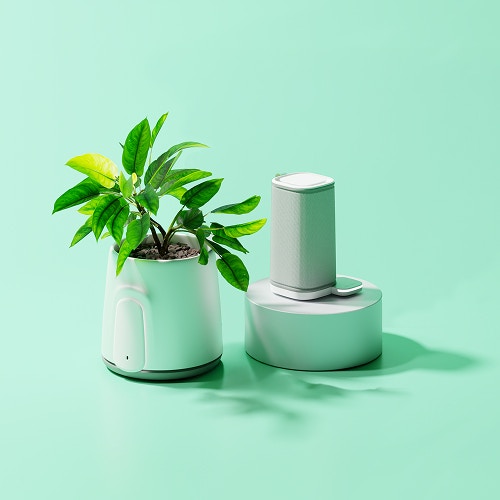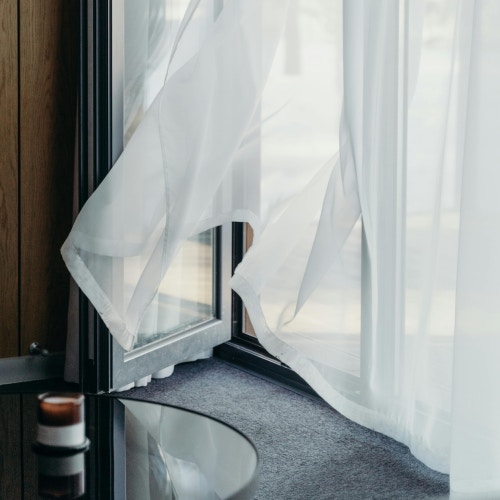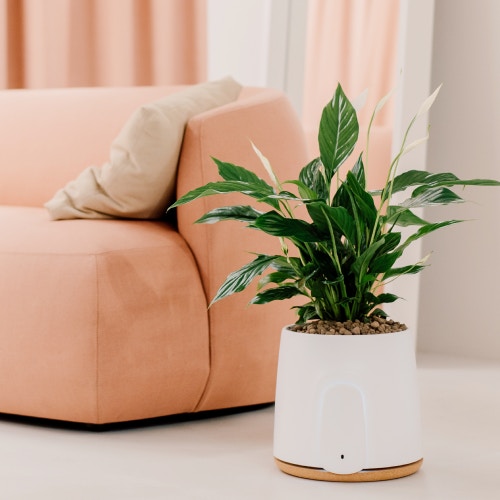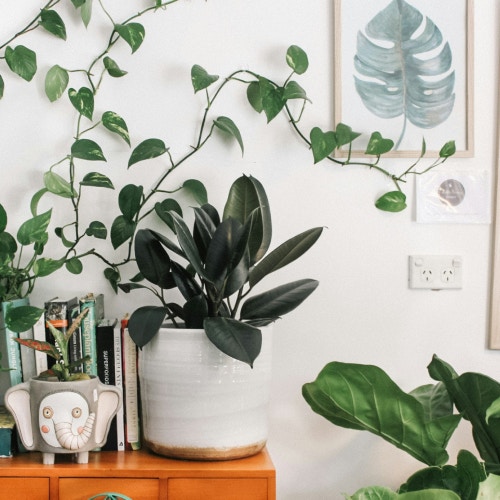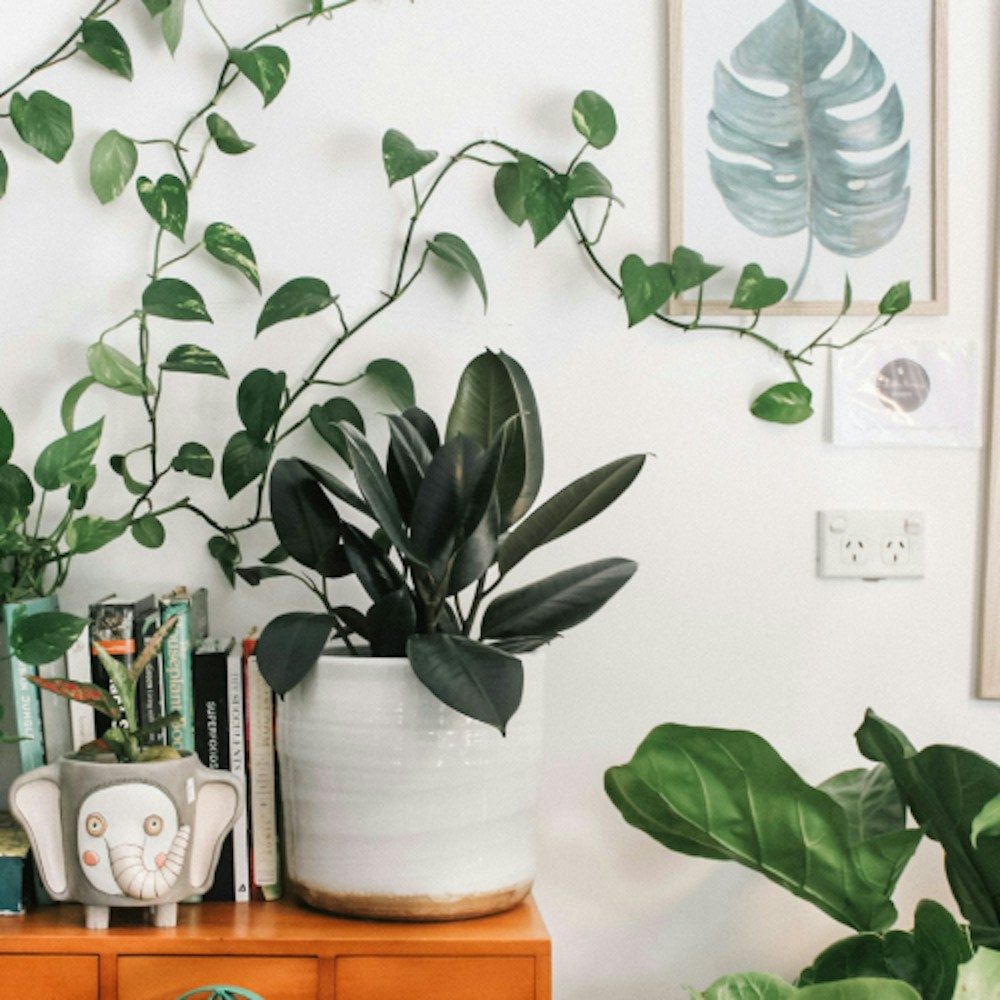
5 pollutants hiding in your air and how to eliminate them
→
Home sweet home? Not with hidden pollutants! Let’s find out what the most common ones are, where they can be found and why they are dangerous.
- The health effects of air pollution
- Where pollutants are hiding in your home
- 5 most common air pollutants in your home
- Volatile Organic Compounds (VOCs)
- Particulate Matter (PM 2.5)
- Carbon Dioxide (CO2)
- Biological contaminants
- Viruses - How to reduce air pollution in your home with an air purifier
The health effects of air pollution
Unfortunately, the air we breathe is more and more polluted wherever we are. We all know that the outside air, especially in city centers or highly trafficked areas, is filled with unhealthy particles: vehicle emissions, smoke, dust from construction sites, industrial emissions… According to the WHO, outdoor air pollution caused 4.9 million premature deaths in 2019, which is a dangerously high number.
But not everyone knows that indoor air can be up to 5 times more polluted than outdoor air! In 2020 3.2 million people died due to household air pollution. That is why we want to bring awareness to the danger of the pollutants hiding in your home, so that you can not only breathe cleaner air, but make choices that could save your life.
The good news is that air pollution doesn’t always have extreme consequences that lead to death, although its effects can cause long-term issues to your health, so it’s important to do everything we can to protect ourselves. These symptoms can vary from headaches and nausea to respiratory and cardiovascular issues, which in some cases can even become chronic. We’ll look deeper into the effect of each pollutant on our body.
Where pollutants are hiding in your home
We often think of our home as our safe space, but unfortunately it’s not always like this. In order to keep a healthy living environment we need to take some small precautions that can have a huge impact on our health.
The main sources of air pollutants are usually the ones we use daily but can easily forget: gas stove, candles, heating and cooling systems, fireplaces, cleaning products, dust, pollen and smog entering from the windows, and even our pets!

5 most common air pollutants in your home
In our opinion, these are the 5 most common air pollutants you should keep monitored to ensure your air is perfectly safe to breathe at all times. We’ll learn where they are found, their effect on our health and what we can do to reduce them.
Volatile Organic Compounds (VOCs)
Volatile Organic Compounds (VOCs) are compounds that are mostly human-made and can be frequently found inside our homes - they are 10 times higher indoors than outdoors! They are emitted as gasses from certain solids or liquids, and what makes them dangerous is the fact that they can be everywhere: cleaning products, furniture, paints, office equipment, cosmetic products and even in the food we cook! Here’s a list of the most common VOCs and their source:
- Formaldehyde (furniture, house decor, cigarette smoke…)
- Toluene (paints, glues, solvents, dyes…)
- Ammonia (house cleaning products)
- Benzene (detergents, combustion smoke, resins…)
- Pyrazine (roasted and baked food, fragrance products…)
- Limonene (cosmetic, skincare and cleaning products, candles, desserts…)
The best way to limit their effects on our health is to air out the rooms often, and avoid buying products that contain these substances and opt for a more natural solution. They usually can cause headaches, tiredness, eye, nasal, and oral irritation, cough, but they can also lead to more dangerous issues (especially toluene and benzene).
Particulate Matter (PM 2.5)
Fine particles (PM2.5) are tiny particles or droplets with a width of two and a half microns or less. They are extremely risky precisely because of their size, as they can get into the lungs and blood vessels. They are usually emitted from combustions such as exhaust gasses outside and candles, cigarettes, or fumes from cooking in the home. They can cause eye, nasal, and oral irritation, and other symptoms such as coughing, congestion, or shortness of breath. In severe cases they can also lead to respiratory problems. In these cases it is important to avoid sources of smoke and keep the room as clean as possible.
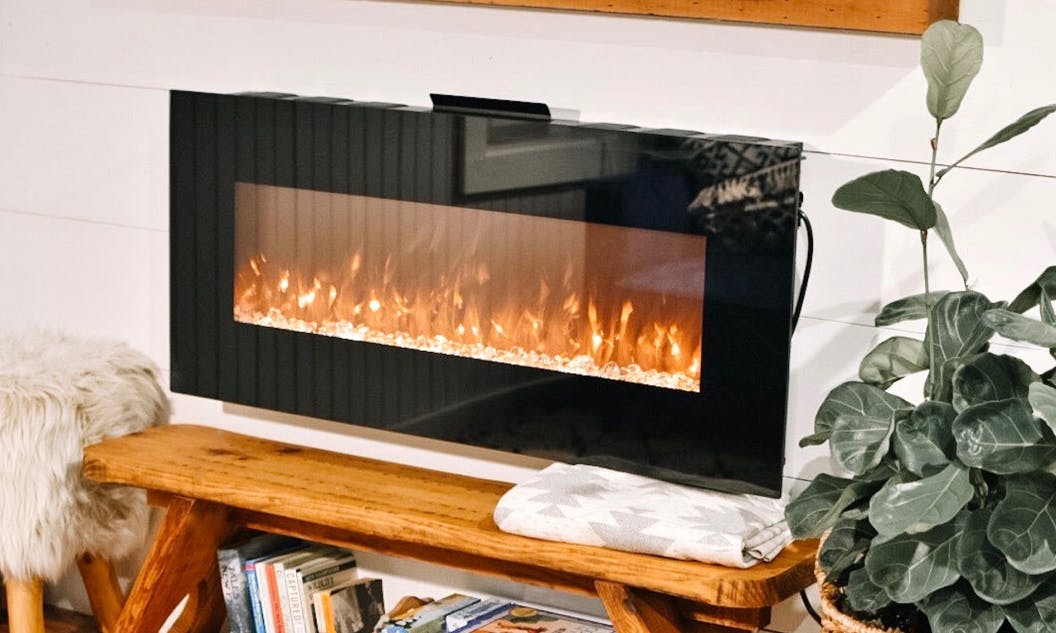
Carbon Dioxide (CO2)
Carbon dioxide is an odorless, colorless gas in the atmosphere, and is the main gas involved in the greenhouse effect. It is found in a small part in the air we breathe, but is also emitted from our bodies through lung exhalation. Sources of CO2 found in the home include fireplaces and stoves, fumes (including from cooking), and also the presence of many people in a small space. A high concentration of CO2 can cause drowsiness, headaches and nausea, and in the most extreme cases even unconsciousness. To solve the problem, it is important to increase ventilation, but using some plants to turn CO2 into oxygen is also a great solution. There are some plants that continue to emit oxygen even at night, such as Sansevieria Trifasciata.
Biological contaminants
These include bacteria and molds. Bacteria are microorganisms critical to the balance of our biosphere, and because of their small size and high rate of reproduction they are widely distributed. They can be found in heating/cooling systems, in dust, and even in food products. They are often the cause of infections of various types (pulmonary, skin, oral...).
Molds, on the other hand, are an agglomeration of mycetes (multicellular organisms) that form on plant or animal matter, often appearing as a spongy or stringy layer. Like bacteria, they can be found in heating/cooling systems and in damp places in general. They can cause respiratory problems and asthma.
The best way to make sure you avoid biological contaminants is to keep the humidity monitored (it usually needs to be between 30 and 60 percent), ventilate rooms often, keep them clean, and don't forget to properly maintain ventilation systems.
Viruses
Viruses are infectious agents that replicate only within the living cells of an organism. They are usually found on our skin and on various surfaces: metallic, plastic and porous. Depending on the virus, they can cause different kinds of infections (lung, skin, oral...). In these cases, it is essential to keep the environment clean by using special products to disinfect surfaces, in addition to having proper personal hygiene.

How to reduce air pollution in your home with an air purifier
Opening the windows is very important to get a proper air flow. This allows you to get rid of stale air, helps control the humidity levels in your home, reduces CO2 and the concentration of other pollutants.
But the best way to reduce air pollution inside your home is to invest in an air purifier, so you can tackle the problem at the roots. If possible, consider an air purifier that also has a monitoring system so you can check your air quality whenever you need to.
Our Natede Smart is the best solution for you! It monitors:
- Temperature
- Humidity
- VOCs
- CO2
- PM 2.5
These values are monitored in real time so you can check the air quality in your home any time, wherever you are!
It combines the natural purification power of plants with the innovative photocatalytic technology to provide great results and purifies the air inside your home so you can always breathe healthy, clean air. There are no filters to change, since the pollutants aren’t captured by the filter but eliminated at molecular level thanks to the chemical reaction activated by the visible band LEDs near the filter. You just need to rinse the filter under running water once every 2 months and it’s as good as new!
Natede Smart also adds a touch of nature in your home and can seamlessly adapt to the aesthetic of every room in your home.
